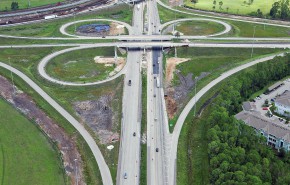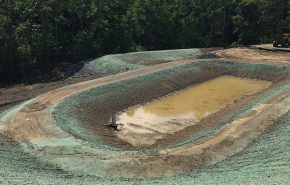Autumn brings to mind cooler temperatures, changing colors, falling leaves, sweaters, football games…and back to school.
With educational campus infrastructure projects (and all projects in general), the basic tenets of civil site design are the same for every job: provide safe, functional, and efficient infrastructure to support the surrounding community. For a project to be successfully executed and delivered, technical skills must be guided by a clear understanding of the client’s project goals and vision. In honor of “Back to School” season, here are five basic supplies to have in your backpack for an educational institution project—mastering these fundamentals is the first step to ensuring that specific goals and vision are met, and that the project receives an “A+” grade.
Campus Infrastructure Improvements—Understanding Campus Function
![]() Are there any special events planned on campus in the near future? Where are deliveries picked up and dropped off? What is the frequency of the campus shuttle and what route does it take? These are only a few questions design professionals should ask when it comes to designing and constructing campus infrastructure improvements. What may appear to be a simple fix on a set of plans may not be so easy in the field without fully understanding how the proposed project impacts stakeholders. Eliminating or minimizing stakeholder inconveniences during construction will help to keep things running smoothly.
Are there any special events planned on campus in the near future? Where are deliveries picked up and dropped off? What is the frequency of the campus shuttle and what route does it take? These are only a few questions design professionals should ask when it comes to designing and constructing campus infrastructure improvements. What may appear to be a simple fix on a set of plans may not be so easy in the field without fully understanding how the proposed project impacts stakeholders. Eliminating or minimizing stakeholder inconveniences during construction will help to keep things running smoothly.
Campus Infrastructure Improvements—Comprehending Design Requirements
Clearly communicating and managing expectations are two keys to successfully delivering any project. Too often, design approaches suited for a commercial project are applied to educational campuses, resulting in an overdesigned, over-budget solution. In many situations, educational campuses have internal design standards that must be followed, which are sometimes less stringent than the adjacent jurisdictions. Understanding and outlining these standards early will help to ensure a clear comprehension of the delivered product.
Campus Infrastructure Improvements—Grasping the “Bigger Picture”
Attracting the best and the brightest students to colleges and universities is highly competitive. For many students, the variety and quality of student housing, classrooms, student unions, and recreational options oftentimes become the deciding factors as to which institution to attend. Studying and understanding an institution’s master plan aids in grasping expectations about how a particular project plays into the bigger picture.
Campus Infrastructure Improvements—Identifying Project Delivery
All educational campus activities revolve around the academic school year. Accordingly, clients typically want to stage projects so that construction occurs during the summer months or during programmed breaks in the academic schedule. It is important to have a discussion about project delivery early so that plans can be designed to accommodate construction and, if necessary, accommodate for construction phasing or accelerated delivery.
Campus Infrastructure Improvements—Be Aware of Project Funding
Unlike residential or commercial projects where the developer typically provides project funding, educational institution projects are funded via various sources—be it state or federal grants, local ad valorem revenue, or revenue collected from students such as tuition, parking fees, and activity fees. To complicate matters even more, some projects are funded, in part, from several department budgets within the same institution. Multiple funding sources often results in project design professionals assisting clients with cost accounting services to ensure compliance with grant requirements, or to ensure that a specific department allocates its “fair share” of project funding to the overall job. Keeping funding sources in mind while a project is being designed makes this accounting exercise much easier to execute in lieu of performing this service after the fact.
By grasping and mastering these five basic elements, the project team will be well on its way to earning an “A+” when planning for and implementing educational campus infrastructure improvements. For questions or additional information on GAI’s education services and experience, contact Nick Mousa, AICP, Director, Florida Market Initiatives, at 904.363.1110.


